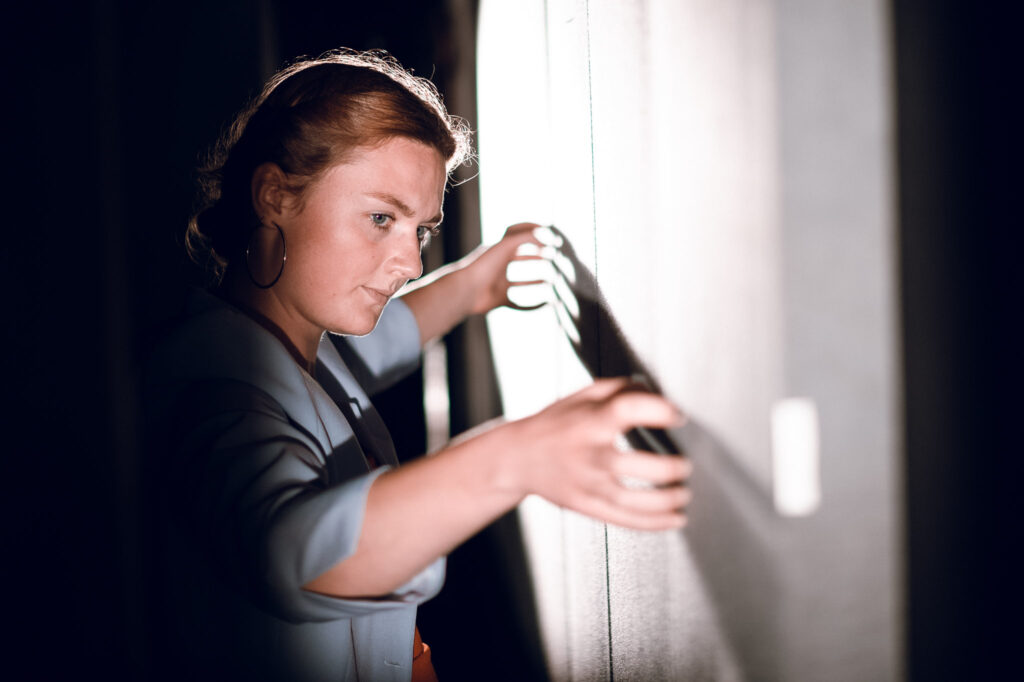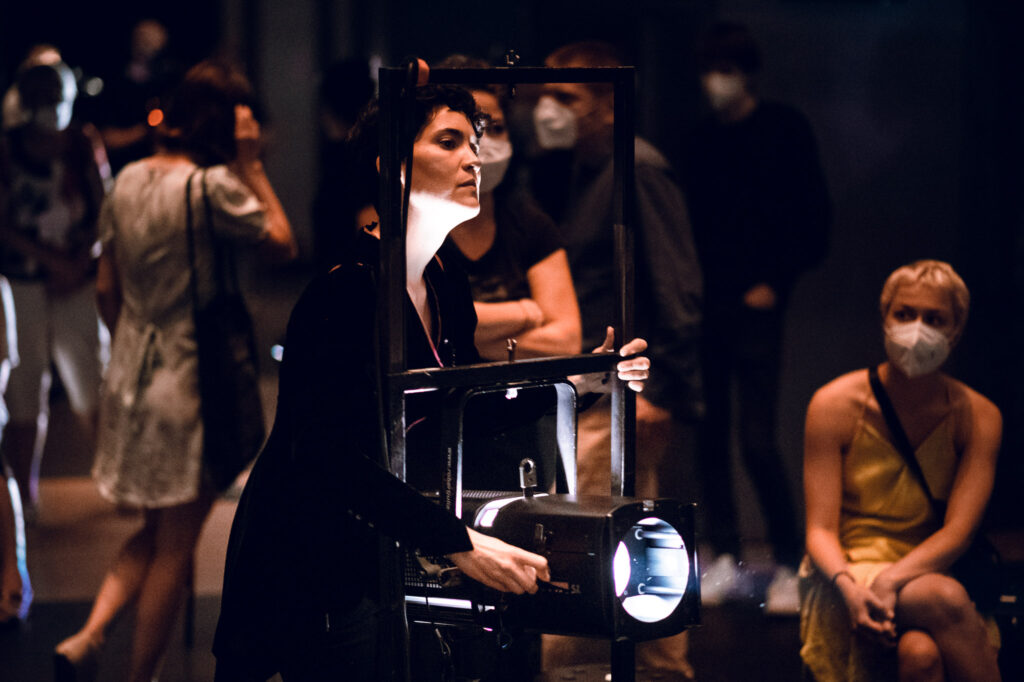To explain and describe the steps of the creative process, I will refer to my recent stage work Those Who Speak for Themselves which premiered on 29 and 30 June 2021 at the Archa Theatre. The show created with 12 women from different cultural and social backgrounds is based on their authentic life stories. The process of creation started with an open call released in December 2019 to find people who would be interested in sharing their own personal stories on stage. From 90 applications we selected 30 people and invited them for an interview. Twenty of them were given the first long-term workshop for free. Twelve women from this group tried to continue to the second and final part of the workshops. They made up the final cast of the show.
The whole process from the first meeting in March 2020 until the premiere in June 2021 lasted almost one and a half years, including many unexpected interruptions due to the Covid-19 lockdowns.
While working on a new project I am always aware of five tasks:
- Create an atmosphere of trust
- Let participants discover their hidden abilities
- Create a unique theatrical language according to the specific character of the group
- Apply “extreme listening” and “embracing the obstacle” at certain moments of the work
- Enjoy the work every moment
All these steps should be incorporated into a workshop or rehearsals of a new theatre piece. When putting together your group, keep in mind that it is good to have an even number of participants, since the main principle of the work is “partnering”. Working in couples is a tool to collect information from each other.
At the beginning of the work, clarify the final goal and communicate it in a good way. Be clear about whether the aim is a workshop with or without a public presentation, or if your work is heading to a performance. Also, you must underline that all participants will adhere to certain rules during the work: They should distinguish the stage from the auditorium and continuously alternate between the positions of performers and viewers. Even though the participants are not professional theatre makers, they should behave as such during the creative work. Ask them not to make phone calls, not to eat or drink on stage during the rehearsals.
Imagine that you are in a room with a group of people you have never met before and you have the goal to create a stage work with them. That was the case in Those Who Speak for Themselves: There were 12 women with different ages and backgrounds. I had never met any of them before we started the workshops. They did not know each other either. I did not know their abilities, thoughts, ideas or goals. I did not know even what the show would be about, how it would look or which elements it would include.
It should be emphasized that the show was created during the ongoing Covid-19 pandemic. Certainly, it was a huge obstacle which forced us to think of the position of the audience considering the necessity for social distancing. Therefore, we created a format in which members of the audience can decide for themselves their position in relation to the performers and to each other. Including this huge obstacle into the performance created its basic aesthetic feature.


